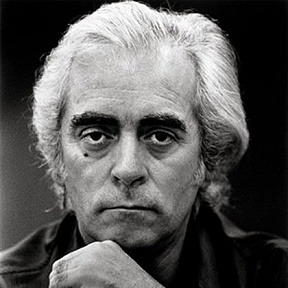
The specialised critics baptised her years ago as the lady of flamenco, a title that comes along with the National Music Prize and the Compás del Cante, among others. ‘Cantaora’, ‘Un ramito de locura’, ‘Raíces y alas’, ‘Locura de brisa y trino’ (this one with Manolo Sanlúcar), ‘Canciones populares antiguas’ and ‘Verso a verso’ are good examples of this. Carmen Linares (1953) adapted poems by Lorca and Miguel Hernández, Borges, Juan Ramón Jiménez and countless other authors who, together with popular poetry, nourished her discography with literature. The album ‘Antología de la mujer en el cante’, featuring Pepe Habichuela among other guitarists, opened up new frontiers and consolidated itself as a major reference within the genre. The echo that was forged in Linares, learnt in the tablaos of Madrid and later triumphed in the most important theatres on the planet: Carnegie Hall in New York, Sydney Opera House, Sadler’s Wells in London… Por cierto, Locura de Brisa y Trino no concita en su favor ese consenso mayoritario que sí lograra doce años antes. It is worth mentioning that since the 1970s he has accompanied Linares at some of the zeniths of his career, both live and in the studio.Ĭarmen Linares, for her part, is the leading female voice of the second half of the 20th century. Éstos, que no es el lenguaje melódico de Manolo Sanlúcar aquellos, que es muy intelectual y los de más allá, que es lo más grande que se ha hecho entre un guitarrista y una cantaora. He participated in some of Enrique Morente’s historic recordings, was one of the driving forces behind the group Ketama and has a solo career that has earned him the Gold Medal for Merit in the Fine Arts.

And that is what she is celebrating in her latest project: ’40 años de Flamenco’, a window to look back and contemplate what she has done so far.įor this, she will have the special collaboration of Pepe Habichuela, a living legend of guitar who represents a past that has not left us. TIDAL is the first global music streaming service with high fidelity sound, hi-def video quality, along with expertly curated playlists and original content. The flamboyant Princess of Asturias Award winner has been on stage for more than four decades.

The most ambitious of his contributions to the art was his constant striving to integrate flamenco in symphonic music.

Sanlúcar soon began to research, aware that the guitar had infinite possibilities that had hardly been explored.

His brothers also decided on the same vocation, among them Isidro. Sanlúcar's teacher was his father, Isidro Sanlúcar, a baker and old-style guitarist, who frequently came home with people who were fond of cante and playing from his childhood he was exceptionally skilled to follow in his steps. He was considered one of the most important Spanish composers of recent times, and together with Paco de Lucía, Tomatito, and Vicente Amigo, one of the main figures in the evolution of the flamenco guitar. Manolo Sanlúcar (born Manuel Muñoz Alcón, 24 November 1943 – 27 August 2022) was a Spanish flamenco composer and guitarist.


 0 kommentar(er)
0 kommentar(er)
